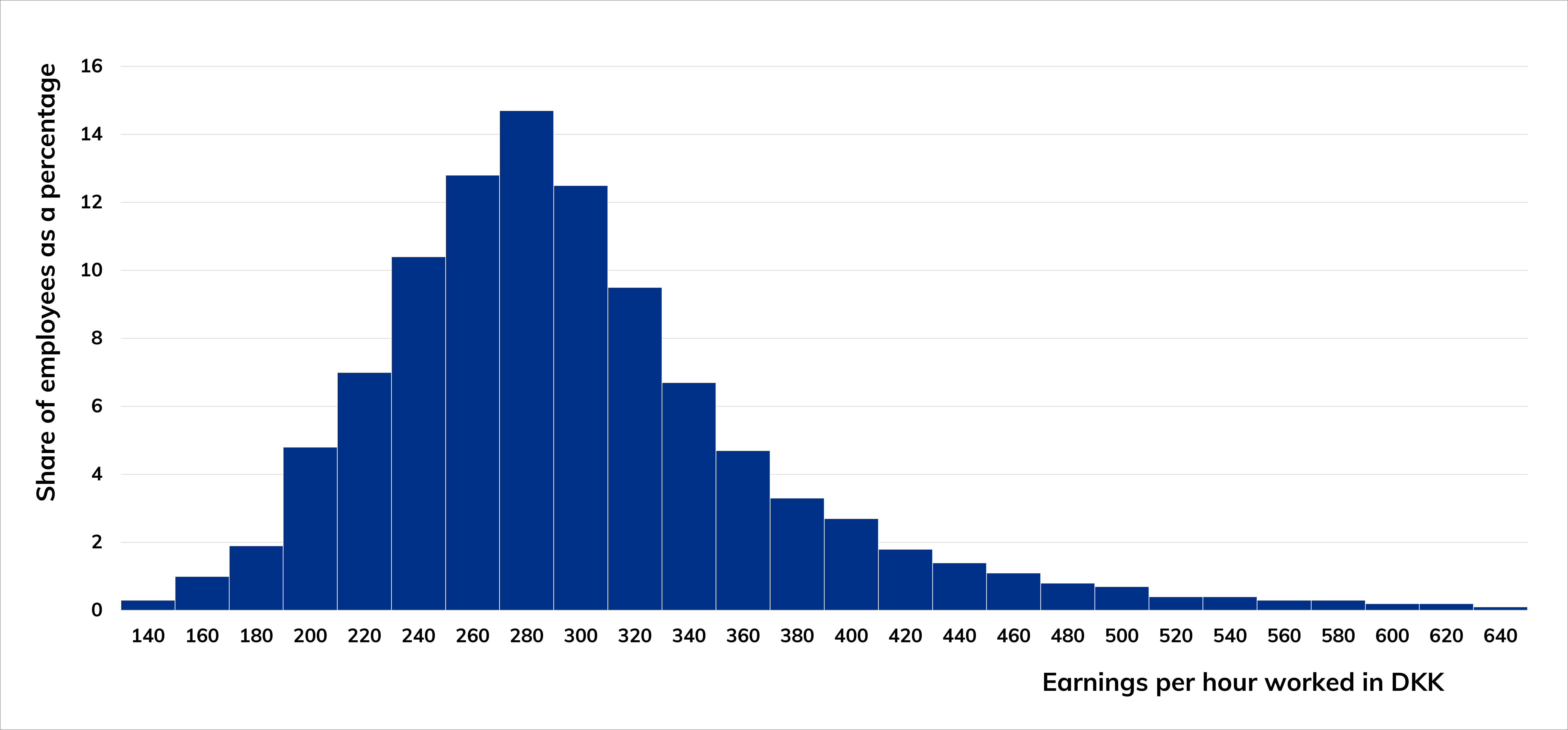In Denmark, pay conditions are established through collective agreements or individual agreements between companies and employees. On this page, you can see the pay levels and agreement terms and conditions for construction workers.
The pay of individual employees varies and depends on factors such as performance, skills, experience and in some cases piecework and bonus agreements. Other factors are the company's profile, geographical location, etc.
The chart below shows earnings per hour worked for construction workers who are employed as ordinary employees. Apprentices, young workers, managers, and employees with special responsibilities are not included.
The group includes individuals who perform a wide range of work related to the construction and renovation of buildings, including roofing, paving, scaffolding, and sewerage and utilities street works, as well as concrete work and assembly and installation work, demolition work and work as an assistant in the construction sector.
Earnings per hour worked for construction workers

Source: Confederation of Danish Employers 2024. Construction workers are calculated on the basis of work function (DISCO) = 9: Elementary occupations and the industry code = construction.
See the bar chart "Earnings per hour worked for construction workers" in a larger scale
The chart shows that a quarter of employees receive an overall payment of less than DKK 262,29 per hour worked. The median is DKK 294,74. The most highly paid quarter receive an overall payment of more than DKK 337,47.
Some employees receive significantly less and others significantly more than the figures mentioned.
The average is DKK 306,59 per hour worked.
What do earnings per hour worked consist of?
Earnings per hour worked is the overall amount that Danish employers pay for 1 hour of work. The payment includes all pay elements, including the agreed hourly wage and fixed and variable supplements, bank holidays (public holidays, which fall on a weekday), holiday and absence payments, and pensions. Absence payments are distributed across the hours worked.
Supplements for overtime and other nuisance compensation are not included.
Remuneration of posted employees must take place within the framework of EU law.
Pay elements of the Collective Agreement for the Construction and Civil Engineering Sectors
The salaries shown reflect the individual and collective agreements that have been entered into between companies and employees. The leading collective agreement for construction workers is the Collective Agreement for the Construction and Civil Engineering Sectors between DI (Confederation of Danish Industry) and 3F (United Federation of Workers in Denmark).
The summary below shows the pay elements that form the basis for earnings, excluding nuisance compensation, for employees covered by the Collective Agreement for the Construction and Civil Engineering Sectors.
- Minimum wage agreement. The agreement contains a minimum rate below which the basic wage must not fall.
- Personal and locally negotiated pay supplements
- Employer-paid pension contributions: 11 %.
- Additional holiday entitlement, payment for public holidays or free choice: 14.70%. From 1 March 2026: 15,70%. From 1 March 2027: 16,70%.
- Health insurance scheme 0.15 %.
- Right to wages during periods of illness and maternity leave, etc. under certain conditions
- Piecework pay options
- In addition to the elements mentioned, the agreement contains provisions on nuisance compensation which goes over and above the pay shown.
- In addition to the agreement-based pay elements, the legislation prescribes a holiday payment of 12.5 %.
Collective Agreement for the Construction and Civil Engineering Sectors 2025-2028 (in danish)

